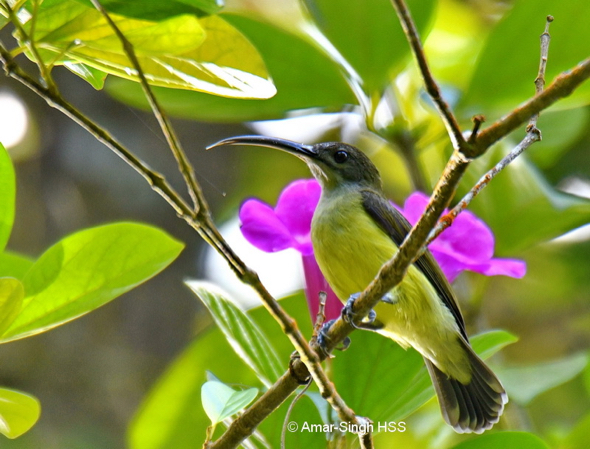“I was up on this hill were a species of Rhododendron (a creeper) were flowering in large profusion. A Little Spiderhunter (Arachnothera longirostra cinereicollis) (below) was busy feeding and enjoying the nectar from many flowers; calling out while feeding.
“It was interesting to watch the Little Spiderhunter use both nectar robbing techniques (piercing the base of the flowers, below) as well as obtaining nectar directly from the front of the flower.
“I could see why different flowers of the same species were treated differently. Call recording of those used when feed with waveform and sonogram are given below.
Dato’ Dr Amar-Singh HSS
Ipoh, Perak, Malaysia
15th November 2018
Location: 500 m ASL, Kledang-Sayong Forest Reserve, Ipoh, Perak, Malaysia
Habitat: Trail along primary jungle











